45th hearing set for July 11, 2019, 2 p.m. Judge Lillard, Rm. 502 Frank Murphy Hall
Judge Lillard orders prosecution, defense to present “sentencing memorandums” by June 9 and June 23
Lewis refuses witnesses for mitigation hearing; Judge Lillard says SHE will appoint them; prosecution indicates it will call polygraph examiner as a witness without having an exam conducted
Lewis: aiming to win case on appeal due to multiple unconstitutional rulings in JLWOP hearings lasting over 3 years
Lewis’ arrest in 1976 for the killing of an off-duty white police officer took place amid racist turmoil in Detroit caused by white cops, homeowners, judges
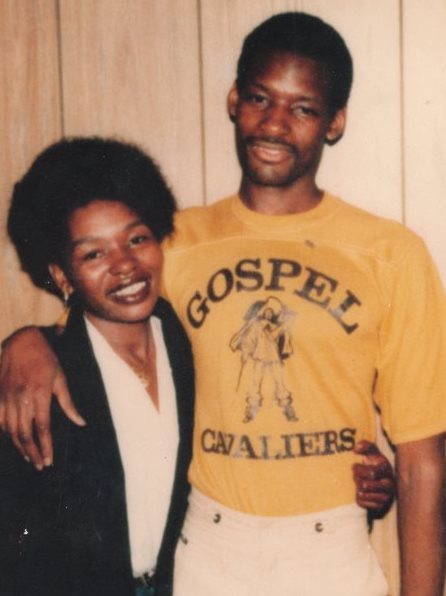
Charles Lewis shortly after his incarceration in 1977, with his mother Rosie Lewis.
DETROIT – Charles K.K. Lewis is in a pitched battle for his very life, as he has been since the age of 17.
Third Circuit Court Judge Qiana Lillard has now set July 11, 2019 as the date she will begin mitigation hearing(s) on his juvenile lifer re-sentencing, after 43 years of his incarceration. She set the date during a hearing April 16.
Despite Lewis’ objections, she said she will assign “mitigation” and other experts she thinks are needed for the event.
VOD recently discovered from a reliable source that the prosecution is planning to call an appointed polygraph examiner as a witness, despite Lewis’ express objections to using any witnesses, in particular a former police officer who heads an organization of polygraph examiners led by many former police officers to administer a polygraph exam.
Lewis has always maintained he is innocent of killing off-duty Detroit police officer Gerald Sypitkowski on July 31, 1976. Ironically, Judge Lillard denied his recent motion to dismiss his case based on actual innocence Dec. 3, 2018, without addressing the innocence issue at all. Instead, she mis-characterized his motion as a motion for a Ginther hearing.
See Lewis original motion, filed by his defense attorney Sanford Schulman at http://voiceofdetroit.net/wp-content/uploads/SS-motion-actual-innocence-CL-4-9-7-18.pdf
See Judge Lillard’s response at http://voiceofdetroit.net/wp-content/uploads/Motion-to-Dismiss-for-actual-innocence-motion-for-new-trial.pdf
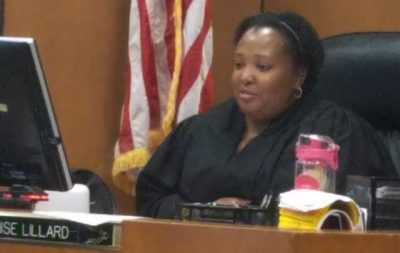
Judge Qiana Lillard at hearing Sept. 28, 2018.
In his own pro se filing in response, Lewis said, “You [Judge Lillard] . . . refused to address my claim of ACTUAL INNOCENCE. And, my claim of Ineffective Assistance of [trial] Counsel. Refusing to address those issues denied me access to the Court. And effectively denied me the right to present mitigating evidence at a mitigation hearing. The Michigan Court of Appeals needs to address this issue before we move forward.”
Now, however, the PROSECUTION wants to call the polygraph examiner in question as a witness at the mitigation hearing, although no polygraph exam was conducted. Lewis cannot legally be FORCED to undergo a polygraph exam, although Schulman has told VOD a polygraph exam is necessary before any other witnesses are called, and AP Dawson has argued that the re-sentencing proceedings are not a re-trial.
These latest events follow more than three years of hearings on the likely deliberate loss of Lewis’ official court file, the wipe-0ut of his official Register of Actions, and his claim of innocence in the killing of Sypitkowski.
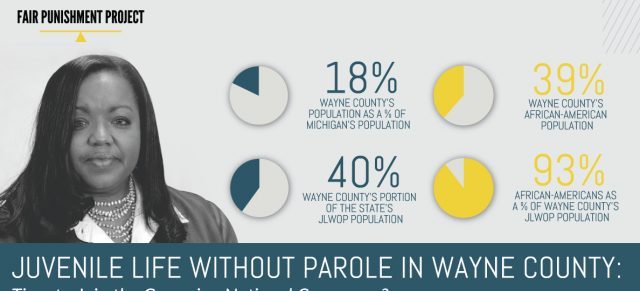
Judge Qiana Lillard worked as an assistant prosecutor under Prosecutor Kym Worthy (shown above) for eight years before being appointed to the bench by Gov. Rick Snyder. Lillard has said she considers Worthy her “mentor.”
“I think they are just waiting for me to die,” Lewis told VOD earlier, referring to the apparent fact that Judge Lillard has kept him trapped in her court in what he believes is a deliberate effort to keep him from taking what he believes are unconstitutional rulings on her part to the Appellate Courts.
Another case of Judge Lillard’s, People v. Walker, is currently pending a ruling by the Michigan Supreme Court on alleged gross irregularities in case conduct and sentencing. Three other cases resulted in Court of Appeals rulings vacating the sentences and ordering the defendants assigned to another judge for proper sentencing. In those cases, Judge Lillard reported on the record that she has a policy of sentencing defendants to the top of the sentencing guidelines for exercising their 6th Amendment right to a jury trial rather than taking a plea deal.

Lewis’ hero, Colin Kaepernick, Taking the Knee against injustice. Lewis received 60th birthday cards with this image, calling him a “political prisoner” and “freedom fighter.” Lewis is an avid football fan as well.
Lewis just reached his 60th birthday May 13, behind the walls of the Macomb Correctional Facility’s Re-Entry Program. He has been incarcerated since 1976, at the age of 17, when he weighed 150 lbs. and was about to graduate from Finney High School. He played keyboards and guitar with local bands and was noted for his extraordinary musical and athletic talent. His grandfather, who played with B.B. King, gave him his first guitar at the age of 4, calling him not his “grandson” but his “GRAND BOY,” in recognition of his obvious talent, according to Lewis’ mother Rosie Lewis.
Lewis took loving care of his four younger siblings while his parents Rosie and Herbert Lewis were at work. He had a potentially bright and happy future ahead of him.
But he came of age on Detroit’s east side in a racially volatile era, just after the election of the city’s first Black Mayor, Coleman Young in 1974. White cops were enraged when Blacks began to be hired on the force. White homeowners, led by Detroit Recorder’s Court Judge Thomas Poindexter and the Greater Detroit Homeowners Council, fought the incursion of Black families into their neighborhoods.
Lewis and his family had just moved into a home at 12631 Kilbourne on Detroit’s east side, becoming one of only two Black families on their block at the time.
“At seventeen I was old enough to know that being accused of killing a cop in Detroit was a death sentence,” Lewis recalls in a vivid life history he wrote shortly after his incarceration.
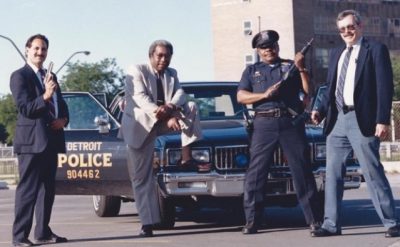
THE BIG FOUR–This photo is of the Major Crimes Mobile Unit of the Detroit Police Department.
“The Detroit Police Department terrorized the black community in the fifties, sixties and seventies with brutal beatings and senseless murders,” Lewis said.
“It was no secret in the ‘hood that during the times when Detroit had the highest murder rate in the country, that most of the murders were committed by rogue police officers. Black males were routinely the victims of police brutality. Something as harmless as ignoring an officer’s command to walk to his squad car could get you killed.”
The New York Times reported in 1976 that over 600 murders had taken place in the City of Detroit in 1975, with the last being the killing of a Black man as he ran from the police.
Lewis’ father Herbert Lewis was falsely accused of robbing a Farmer Jack at Gratiot and Bellevue on Oct. 6, 1972. But Lewis and his wife produced “employment records. . . proving beyond question that Lewis was in Oberlin, Ohio, working for the Federal Aviation Administration on October 6, 1972, the day of the robbery. The robbery charge was therefore dropped, and the criminal case was dismissed at the preliminary examination on March 30, 1973.” (See Lewis v Farmer Jack Division, Inc.327 N.W.2d 893.)
Rosie Lewis says police continued to harass their family after the charges were dropped and her husband sued the city, initially winning $40,000 in a jury verdict for “false arrest,” an award that was later overturned by the Michigan Supreme Court.
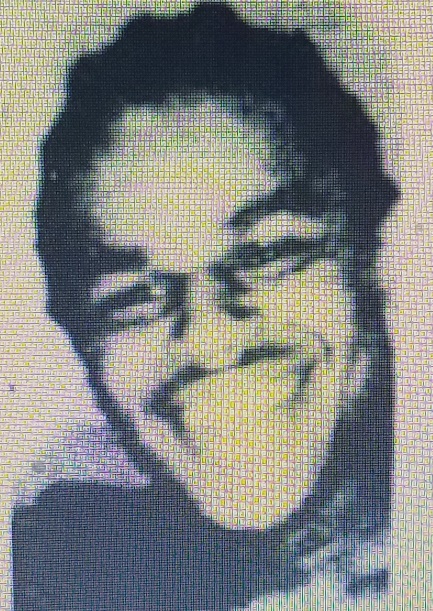
Obie Wynn, 18. killed by white bar owner in 1975

Leslie Armstrong, 27, killed by white cops 1978
Later, in 1975, Black youth from across the city took over Livernois on the west side for three days after white bartender Andrew Chinarian killed 18-year-old Obie Wynn, unarmed, in the parking lot of Chinarian’s bar, claiming he thought Wynn was ABOUT to break into a car.
Chinarian was finally charged with second-degree murder after a pitched community battle, but that was eventually reduced to a misdemeanor charge of careless and reckless use of a firearm resulting in death. Judge Leonard Townsend sentenced him to six months in DeHoCo, three years probation, and a $300 fine.
Also in 1977, Detroit police prisoner Bernard Miller, 26, died of a fractured skull four days after police arrested him and subdued him forcibly during a neighborhood fight. He was unconscious in his cell for those days before police took him to Detroit General Hospital, where he died.
In 1978 Leslie Wayne Armstrong, 27, also Black and unarmed, was killed by white cops Jay Hammer and Charles Springer using a flashlight chokehold on the east side. They were charged and convicted in Armstrong’s death in front of Judge Poindexter, but Poindexter later overturned the jury verdict.
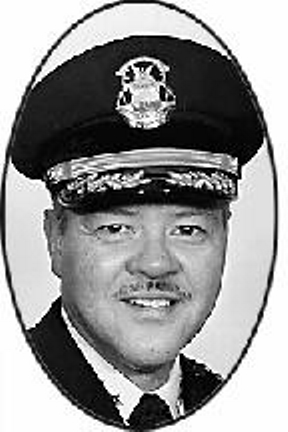
Exec. Dep. Police Chief Frank Blount was the highest-ranking Black in the DPD in 1975.
In 1977, the FBI was also investigating the role of DPD Exec. Dep. Chief Frank Blount in narcotics trafficking. Blount was fired at the time, and deputy chief Reginald Harvel committed suicide. However, many attributed those events to white Police Chief Phillip Tannian’s actions and attempts to attack the Coleman Young administration. Young later fired Tannian and replaced him with William Hart.
Gil Hill, then a DPD sergeant who had been with the predominantly white police force for 18 years, was later probed by the FBI for his role in cover-up of death of Damion Lucas, 13 in 1992 in a drug-related drive-by shooting. “White Boy Rick” Wershe says he reported numerous other such cover-ups by Gil Hill to the FBI.
Hill was to become the key actor in the frame-up of Charles Lewis.
Hill, then a DPD Sergeant used to working with white cops, fingered Lewis as the killer of an off-duty white cop, Gerald Syptikowski, at Harper and Barrett on Detroit’s east side, based only on reports by “confidential informants” according to Lewis’ DPD homicide file. That death has always had a cloud of rumors swirling around it about mob involvement in numbers rackets.
Despite the fact that Sypitkowski’s partner Dennis Van Fleteren and numerous other eyewitnesses to the killing at Harper and Barrett outside Oty’s Bar testified at two of Lewis’ trials that a completely different perpetrator killed Sypitkowski, a jury allegedly convicted Lewis in front of Judge Joseph Maher during a third trial in Nov. 1977. There remains no record of the names of those jurors.
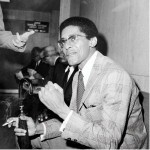
Attorney Kenneth Cockrel Sr. was targeted by Judge Maher for calling him a racist.
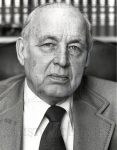
Judge Joseph Maher
Maher was renowned for his earlier, unsuccessful attempt to take militant Black attorney Kenneth Cockrel, Sr.’s law license for telling the media that Maher was a virulent racist. He was also instrumental in the release of notorious Detroit Police S.T.R.E.S.S. officer Raymond Peterson, who killed 12 unarmed Black men as an undercover cop.
Lewis says today of court proceedings in 1977, “It felt like I was sitting through my own lynching. When I stepped into the courtroom racism was the order of the day. White Power was in full effect.”
Lewis’ court-appointed trial attorney was M. Arthur Arduin, a Grosse Pointe resident who earlier headed Judge Poindexter’s campaign committee. Arduin ignored the testimony of Sypitkowski’s partner and numerous other eyewitnesses in his opening and closing statements in Lewis’ first trial in March, 1977. Instead he focused on the coerced testimony of the three Black juveniles. Arduin said he believed essentially that Lewis was guilty, but that the three juveniles should have been tried and convicted with him.
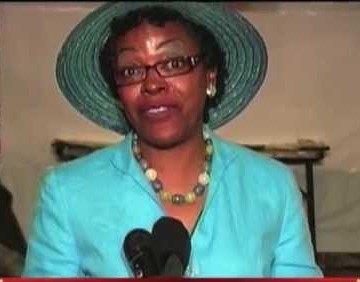
Judge Deborah Thomas
At one point, Lewis recalls, the Court clerk called him up to speak to her on the side, and told him, “You need to get another attorney.”
That trial ended when Maher dismissed the jury without cause on the record. Years later, in 2006, Judge Deborah Thomas said in an opinion that Lewis should therefore have been considered acquitted and subject to double jeopardy.
She added that the three juveniles’ version of the killing was a “scientific impossibility.” Judge Thomas was the last known judge to have possession of that first transcript and likely Lewis’ complete file.
So Lewis should have walked free to continue his young, basically care-free life in March, 1977. He had the whole world still in front of him. But he was to face two more trials, one cut short after Maher took it back over from Genesee County’s first Black Circuit Court Judge, who was visiting.
Lewis reports that he was beaten thoroughly in the course of his arrest, and that police appeared to have set him up for death when he went to turn himself in at the Penobscot Bldg. office of Attorney Gerald Lorence. He had been instructed to go in the back door of the building, where cops were waiting, but instead went through the front entrance.
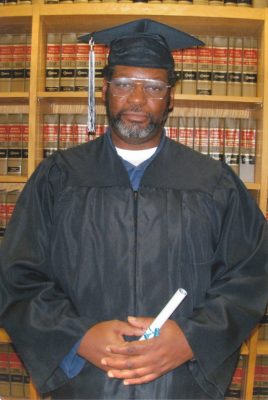
Charles K.K. Lewis
During his incarceration, Lewis vowed to learn about the law, since it had resulted in his conviction. He become an accomplished writer and a reporter for various newspapers, including city and prison publications. His voluminous pro se legal filings attest to his writing and analytical skills. He has earned a paralegal certificate among other degrees in prison, and is well-respected by others in prison, from staff to fellow prisoners, for his assistance in their cases. He was a law clerk at the Lakeland Correctional Facility for 10 years.
Throughout his time in prison, Lewis has also honed his musical skills, heading prison bands in various locations, writing music for them, and coordinating dozens of concerts.
He currently plays in the church band at Macomb Correctional Facility’s Re-Entry Unit. His placement there by the MDOC caused he and his family to assume that he would be re-sentenced to 40-60 years after a brief court hearing, as were others recommended for life without parole in his group there. He has enough “good time” on his record to discharge immediately with that sentence.
But that fell through on Jan. 10, when AP Thomas Dawson moved for Judge Lillard to certify a pile of documents, much of it attorney-client privileged material that Lewis had provided to his previous attorneys from Foley & Lardner, as the official court file in his case.
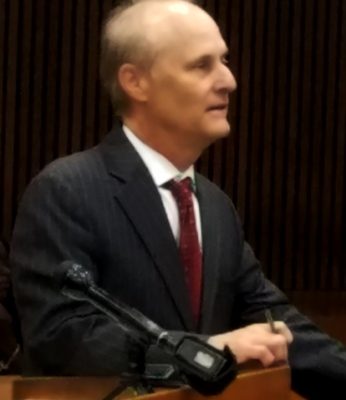
Defense attorney Sanford Schulman
Lewis moved for dismissal of his case in Sept. 2016 due to the loss of his file, based on numerous U.S. and Michigan court precedents, but Lillard denied that motion along with a motion filed by Atty. Valerie Newman for 40-60 years which also cited the loss of the file. Newman did not appeal her ruling and stepped down from his case shortly before joining the Prosecutor’s office as head of its “Conviction Integrity Unit.”
Lewis says that Lillard’s subsequent certification of the file violates Michigan Supreme Court precedent, as well as Michigan Court Rules. He filed a demand for his attorney Sanford A. Schulman to appeal the certification immediately. But Schulman told VOD outside the courtroom one day, “You have to have a court file for a mitigation hearing,”
VOD notes that you also have to have a court file to re-sentence a juvenile to LWOP, which Lewis believes Judge Lillard is intent on doing, since she already denied his earlier motion for 40-60 years.
On April 16, with Lewis on videotape from Macomb, the parties gathered once again to push for the mitigation hearing despite the lack of a case file, a valid Register of Actions, the dismissal of his first jury without a record of the jurors’ names who allegedly convicted him in 1978, the lack of dismissal of his case after a 1980 Pearson evidentiary hearing was held beyond the time limits allowed by state law, and Judge Lillard’s failure to recognize a 2000 court order dismissing his murder conviction and sentence.
Below: video from Lewis court hearing April 16, 2019. AP Tom Dawson is shown in video thumbnail photo.
Lewis asked to be present in person for the July 11 hearing. For the past months, he has appeared on video from prison because of health reasons. He asked Judge Lillard to contact the MDOC to arrange for his transportation directly from Macomb to the Court. VOD earlier covered a hearing in which this was done. Guards from that prison facility remained in court during the session, and left with the defendant afterwards.
During previous stays at the Wayne County Jail, Lewis has not received the proper medication for his severe case of diabetes and has faced other problems as well. Lillard said she would check with the “chief” of her Wayne County deputy sheriffs to see if that can be arranged, although Lewis informed her it should be arranged through the MDOC.
Below, Lewis’ mother Rosie and other supporters address the media after a hearing on Oct. 6, 2017.
#FREECHARLESLEWISNOW, #FREEMICHIGANJUVENILELIFERSNOW, #ENDMASSINCARCERATION, #ENDSCHOOLTOPRISONPIPELINE
Related stories:
FREE AT LAST? PROS. SHATTERS PLAN FOR CHARLES K.K. LEWIS’ RELEASE; HEARING THURS. JAN. 24 @ 10:30 AM
- http://voiceofdetroit.net/2018/10/26/the-system-failed-charles-k-k-lewis-at-jlwop-hearing-invokes-kaepernick-natl-actions-v-racism/
- http://voiceofdetroit.net/2018/09/24/free-detroits-charles-k-k-lewis-now-as-prisoner-releases-flood-deeply-flawed-justice-system/
- http://voiceofdetroit.net/2018/10/26/the-system-failed-charles-k-k-lewis-at-jlwop-hearing-invokes-kaepernick-natl-actions-v-racism/
- http://voiceofdetroit.net/2018/09/24/free-detroits-charles-k-k-lewis-now-as-prisoner-releases-flood-deeply-flawed-justice-system/
- http://voiceofdetroit.net/2018/08/12/will-charles-lewis-247-michigan-juvenile-lifers-die-in-prison-due-to-re-sentencing-delays-or-go-free/
- http://voiceofdetroit.net/2018/07/23/advocates-support-wrongfully-convicted-juvenile-lifers-police-victims-at-detroit-courthouse/
- https://www.detroitnews.com/story/news/local/detroit-city/2018/08/03/charles-lewis-juvenile-lifer-sentencing-expert/889887002
- https://www.detroitnews.com/story/news/local/wayne-county/2018/07/02/missing-file-holds-up-juvenile-lifers-bid-freedom/735086002/
- http://voiceofdetroit.net/2018/06/22/mi-supreme-court-trashes-ussc-rulings-that-only-the-rarest-child-be-sentenced-to-die-in-prison/
- http://voiceofdetroit.net/2018/05/27/u-s-supreme-court-rules-for-death-row-inmate-robert-mccoy-whose-lawyer-conceded-guilt/
- http://voiceofdetroit.net/2018/05/07/detroit-peoples-task-force-forges-ahead-for-prisoners-families-youth-community/
- http://voiceofdetroit.net/2018/04/11/victory-mich-juvenile-lifers-to-have-good-behavior-credits-included-in-re-sentencing-u-s-court/
- http://voiceofdetroit.net/2018/02/22/sitting-through-my-own-lynching-charles-lewis-fights-on-3rd-atty-withdraws-in-secret-hearing/
- http://voiceofdetroit.net/2017/10/17/judge-denies-bond-in-charles-lewis-juvenile-lifer-case-despite-lost-court-record-innocence/
- http://voiceofdetroit.net/2017/10/08/charles-lewis-innocent-detroit-lifer-with-lost-court-file-could-go-free-after-41-yrs-hearing-1013/
- http://www.detroitnews.com/story/news/local/detroit-city/2017/10/06/juvenile-lifer-seeks-release-years/106375972/
- #TAKETHEKNEE! FRI. OCT. 6; FREE CHARLES LEWIS, INNOCENT, IN PRISON 41 YEARS; COURT FILES DESTROYED
- http://voiceofdetroit.net/2017/06/23/juvenile-lifers-ex-offenders-advocates-begin-new-chapter-in-battle-for-justice-june-18/
- http://voiceofdetroit.net/2017/08/08/juvenile-lifer-re-sentencings-drag-on-in-michigan-nation-as-states-snub-u-s-supreme-court/
- http://voiceofdetroit.net/2017/07/15/the-troubled-resentencing-of-americas-juvenile-lifers-the-nation/
- http://voiceofdetroit.net/2017/02/20/charles-lewis-must-be-freed-due-to-loss-of-court-file-innocence-sado-withdraws-from-case/
- http://voiceofdetroit.net/2017/02/12/rogue-justice-free-another-innocent-detroiter-charles-lewis-now-hearing-wed-feb-15-9-am/
- ‘ROGUE JUSTICE!’ FREE ANOTHER INNOCENT DETROITER, CHARLES LEWIS, NOW! HEARING WED. FEB. 15 @ 9 AM.
- http://voiceofdetroit.net/2017/01/20/judge-deborah-thomas-charles-lewis-should-have-been-acquitted-sentence-vacated-in-1976-murde
- http://voiceofdetroit.net/2017/01/12/wayne-co-juvenile-lifers-lives-at-stake-only-two-paroled-charles-lewis-hearing-thurs-feb-9-2017/
- http://voiceofdetroit.net/2016/10/26/free-charles-lewis-mich-juvenile-lifers-re-sentenced-to-die-in-prison-rally-fri-oct-28/
- http://voiceofdetroit.net/2016/10/13/support-for-charles-lewis-mich-juvenile-lifers-strong-at-hearing-oct-11-bring-them-home-now/
- http://voiceofdetroit.net/2016/10/07/stop-new-death-penalty-for-mich-juvenile-lifers-rally-tues-oct-11-for-charles-lewis-others/
- http://voiceofdetroit.net/2016/09/10/new-hope-for-michigan-juvenile-lifer-charles-lewis-as-others-await-long-delayed-justice/
- http://voiceofdetroit.net/2016/09/04/free-charles-lewis-wayne-co-juvenile-lifers-dying-in-prison-rally-at-hearing-tues-sept-6/
- http://voiceofdetroit.net/2016/08/02/michigan-files-for-jlwop-for-80-of-juvenile-lifers-fed-court-wants-all-parole-eligible/
- http://voiceofdetroit.net/2016/07/26/worthy-others-want-large-portion-of-juvenile-lifers-to-die-in-prison-despite-ussc-rulings/
- http://voiceofdetroit.net/2016/05/24/free-charles-lewis-innocent-juvenile-lifer-who-has-spent-41-years-in-state-prisons/
- http://voiceofdetroit.net/2016/04/30/why-is-juvenile-lifer-charles-lewis-still-in-prison-16-yrs-after-his-case-was-dismissed/
- http://voiceofdetroit.net/2012/10/28/michigans-juvenile-lifers-want-state-to-comply-with-u-s-supreme-court-ruling/
- http://voiceofdetroit.net/2012/08/16/michigan-challenges-u-s-supreme-court-ruling-on-juvenile-life-without-parole/
- http://voiceofdetroit.net/2012/07/02/us-supreme-courts-juvenile-lifer-decision-brings-hope-to-thousands/
- http://voiceofdetroit.net/2012/07/02/nations-high-court-ends-mandatory-life-without-parole-sentences-for-youth/




